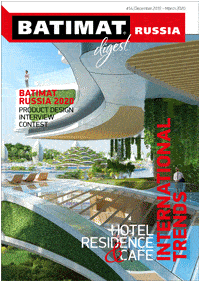Renovation building development in Khoroshevo-Mnevniki will be carried out under a joint project of UNK Project and Nikken Sekkei. The idea is to turn the district into a garden city. Each quarter will differ in its flowering tree — apple, cherry or lilac. The authors particularly emphasize the area of Japanese courtyard where sakura blossoms.

Yuli Borisov, Chief Architect and Managing Partner, UNK Project Architectural Bureau
“We worked together with Japanese architects. First, we carefully studied how people live in our area of Khoroshevo-Mnevniki,” said Yuli Borisov, managing partner of UNK Project – one of the winning companies. “And then we tried to take into account the interests of literally all social groups – from pregnant mothers and teenagers, Muscovites of active age to retirees, so that each of them could feel at home in their neighborhood.”
The concept of quarterly development gave an opportunity to efficiently use the space, zone private and public spaces, increase the permeability of the road network. Each quarter is formed by several urban blocks consisting of houses of different heights. The ground floors are public, entrance groups overlook the street and the courtyard, free from cars. In the courtyard there are leisure grounds and front gardens. Flowing into one another, they will make a great place to take a walk. The cars will go into parking lots – both ground-level and underground – so that the courtyards would be quiet and safe. And the Sakura square – this name was suggested by the Japanese architects – will become the center of gravity for cultural and business life around the Khoroshevskaya metro station, which is now under construction. The transport hub is surrounded by a business cluster, a shopping center, and a training center with sports facilities. A pedestrian bridge connecting Khoroshevo-Mnevniki with Fili district is designed to the south of the district.
Photos: www.unkproject.ru












